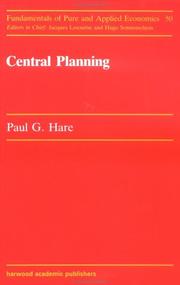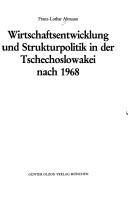| Listing 1 - 10 of 192 | << page >> |
Sort by
|

ISBN: 3718651459 9783718651450 Year: 1991 Publisher: Chur: Harwood,
Abstract | Keywords | Export | Availability | Bookmark
 Loading...
Loading...Choose an application
- Reference Manager
- EndNote
- RefWorks (Direct export to RefWorks)

ISBN: 0044451156 Year: 1989 Publisher: London Unwin Hyman
Abstract | Keywords | Export | Availability | Bookmark
 Loading...
Loading...Choose an application
- Reference Manager
- EndNote
- RefWorks (Direct export to RefWorks)
Book
Year: 1964 Publisher: New Haven: Yale university press,
Abstract | Keywords | Export | Availability | Bookmark
 Loading...
Loading...Choose an application
- Reference Manager
- EndNote
- RefWorks (Direct export to RefWorks)

ISBN: 3789273708 Year: 1987 Publisher: München : Olzog,
Abstract | Keywords | Export | Availability | Bookmark
 Loading...
Loading...Choose an application
- Reference Manager
- EndNote
- RefWorks (Direct export to RefWorks)
Book
ISBN: 0813381649 Year: 1990 Publisher: Boulder (Colo.) : Westview press,
Abstract | Keywords | Export | Availability | Bookmark
 Loading...
Loading...Choose an application
- Reference Manager
- EndNote
- RefWorks (Direct export to RefWorks)

ISBN: 1560001690 Year: 1994 Publisher: New Brunswick (N.J.) : Transaction publishers,
Abstract | Keywords | Export | Availability | Bookmark
 Loading...
Loading...Choose an application
- Reference Manager
- EndNote
- RefWorks (Direct export to RefWorks)
Book
Year: 1991 Publisher: Cambridge, Mass : National Bureau of Economic Research,
Abstract | Keywords | Export | Availability | Bookmark
 Loading...
Loading...Choose an application
- Reference Manager
- EndNote
- RefWorks (Direct export to RefWorks)
This paper identifies obstacles hindering the transformation of centrally-planned economies (CPEs) into well-functioning market economies. The analysis is motivated by the recent experience with economic transformation and restructuring in Eastern Europe and the U.S.S.R. The economic system in CPEs is highly distorted. Prices do not represent real social costs, incentives systems are absent, losses of unprofitable state-owned enterprises are automatically financed, legislations vital for the functioning of markets are not in place, private ownership and property rights are underdeveloped, bankruptcy laws are absent, markets are missing, shortages prevail and, occasionally, inflation is high. The obstacles identified relate to (i) anticipatory dynamics, (ii) monetary overhang and the budget, and (iii) underdeveloped credit markets. It is demonstrated that these obstacles inhibit the effectiveness of price reform, monetary and credit policies, and trade liberalization. The analysis focuses on various ways to remove the obstacles. In this regard, a special examination is made of the implications of cleaning the balance sheets of enterprises and banks from nonperforming loans, as well as ways to enhance credibility. In the absence of such measures, privatization will be difficult since the necessary information about creditworthiness of firms is lacking. The paper concludes with a brief discussion of sequencing, safety nets. and their associated obstacles.
Book
Year: 1986 Publisher: Cambridge, Mass. National Bureau of Economic Research
Abstract | Keywords | Export | Availability | Bookmark
 Loading...
Loading...Choose an application
- Reference Manager
- EndNote
- RefWorks (Direct export to RefWorks)
The paper considers issues in recent research on macroeconomic equilibrium in centrally planned economies. I defend the explicit aggregative , macroeconomic approach in theory, institutional relationships and measurement. It has offered a fresh, coherent framework for analysis of many CPE phenomena, opened up a range of possibilities for empirical investigation, and generated several important spinoffs: work of planners' behavior, insights into CPE policy problems of the 1970s and early 1980s, which centred on macroeconomic equilibrium and threats to it; and some developments in market economy macro theory and econometrics. The quantity-rationing macro model and disequilibrium econometrics give a more useful as well as a more nuanced view of macroeconomic reality in CPEs than the conventional wisdom characterizing them as perpetual "shortage economies".
Book
Year: 1991 Publisher: Cambridge, Mass : National Bureau of Economic Research,
Abstract | Keywords | Export | Availability | Bookmark
 Loading...
Loading...Choose an application
- Reference Manager
- EndNote
- RefWorks (Direct export to RefWorks)
This paper deals with the early stages of transformation of centrally-planned economies (CBEs) into market economies during which expectations playa key role. It focuses on the transitional phase during which the economy is not any more a CPE but has not yet become a market economy. During this phase the economy is referred to as a 'previously centrally-planned economy" (PCPE). A simple model is developed to analyze the consequences of expected price liberalization. The model highlights the anticipatory character of economic behavior during the early stages of the transformation process. A major focus is given to credit markets. The CPEs undergoing transformation lack depth and breadth of financial markets. The lack of information necessary to assess risk and creditworthiness complicates the conduct of credit polity. The analysis illustrates the benefits of an early development of such markets, and of finding appropriate ways to "clean" the balance sheets of enterprises and banks from bad loans. It demonstrates the cost of a fine-tuning strategy and the benefits from a quick implementation of price reform. The paper also examines alternative means to reduce 'liquidity overhang, " and shows that all involve taxation of one form or another. The consequences of privatization are analyzed and the benefits of an early development of an effective tax system highlighted.
Book
ISBN: 3465040058 9783465040057 Year: 2006 Volume: 210 11
Abstract | Keywords | Export | Availability | Bookmark
 Loading...
Loading...Choose an application
- Reference Manager
- EndNote
- RefWorks (Direct export to RefWorks)
| Listing 1 - 10 of 192 | << page >> |
Sort by
|

 Search
Search Feedback
Feedback About UniCat
About UniCat  Help
Help News
News